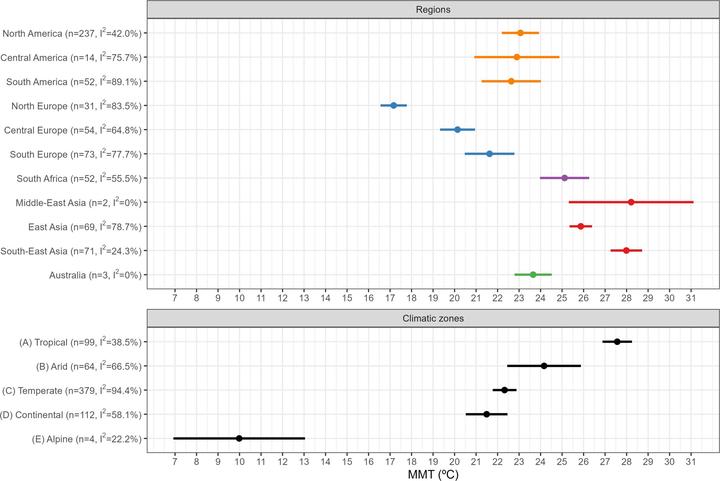
Abstract
Background: Minimum mortality temperature (MMT) is an important indicator to assess the temperature-mortality association, indicating long-term adaptation to local climate. Limited evidence about the geographical variability of the MMT is available at a global scale. Methods: We collected data from 658 communities in 43 countries under different climates. We estimated temperature-mortality associations to derive the MMT for each community using Poisson regression with distributed lag nonlinear models. We investigated the variation in MMT by climatic zone using a mixed-effects meta-analysis and explored the association with climatic and socioeconomic indicators. Results: The geographical distribution of MMTs varied considerably by country between 14.2 and 31.1 ºC decreasing by latitude. For climatic zones, the MMTs increased from alpine (13.0 ºC) to continental (19.3 ºC), temperate (21.7 ºC), arid (24.5 ºC), and tropical (26.5 ºC). The MMT percentiles (MMTPs) corresponding to the MMTs decreased from temperate (79.5th) to continental (75.4th), arid (68.0th), tropical (58.5th), and alpine (41.4th). The MMTs indreased by 0.8 ºC for a 1 ºC rise in a communitys annual mean temperature, and by 1ºC for a 1ºC rise in its SD. While the MMTP decreased by 0.3 centile points for a 1 ºC rise in a communitys annual mean temperature and by 1.3 for a 1 ºC rise in its SD. Conclusions: The geographical distribution of the MMTs and MMTPs is driven mainly by the mean annual temperature, which seems to be a valuable indicator of overall adaptation across populations. Our results suggest that populations have adapted to the average temperature, although there is still more room for adaptation.